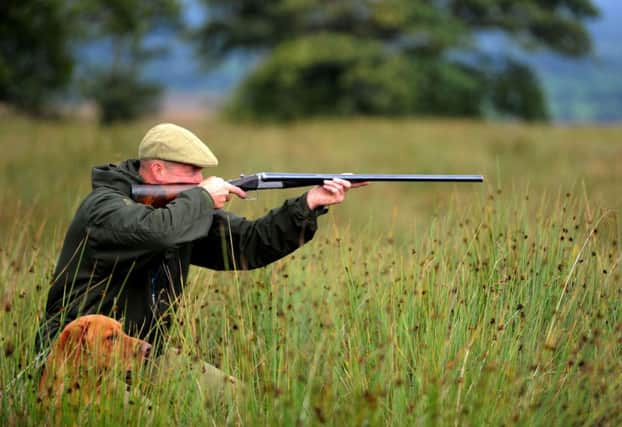Weather boosts spirits as Grouse season begins


A group in traditional tweed dress were among the first to set out on the shooting season in Scotland near Forest Lodge, Blair Atholl, Perthshire.
Moorland managers hope the season can add to the series of “world class” events being held in Scotland this year and deliver a further environmental and economic boost.
Advertisement
Hide AdAdvertisement
Hide AdTim Baynes, director of the Scottish Moorland Group, said: “The Glorious Twelfth this year falls between two marvellous events which will showcase Scotland at its best - the Commonwealth Games and the Ryder Cup - and we hope to make it a triple success story.
“As the thousands of visitors who come every year to shoot in Scotland will testify - grouse shooting in Scotland is truly world class and we’re pleased to say that this year weather conditions really have been ideal for the preparations for the season.
“As Scotland’s tourism minister recognised recently, Scotland has a global reputation as a prime destination for country sports which occupy an important position within the wider tourism industry.
“Apart from the tremendous economic benefit it is also important to underline the very substantial environmental contribution delivered as a result of high quality moorland management.
“Every year many other upland bird species such as waders benefit from moorland management and grouse moors typically have five times as many golden plover and lapwing and about twice as many curlews as other moors operating without that management regime.”
The season opened as a new study revealed that a model could be developed to help tackle the deadlock between grouse shooting and conservationists seeking to protect hen harriers on UK moorlands.
The hen harrier is a natural predator of the red grouse but the study suggests that under certain conditions a solution could be achieved where the birds could co-exist with profitable grouse shooting.
Led by Professor Steve Redpath of the University of Aberdeen, the study, involving grouse managers, conservationists and ecologists, used science as a way to try and find a solution.
Advertisement
Hide AdAdvertisement
Hide AdTogether they agreed key questions they wanted the research to answer, with ecologists then developing a model to explore a possible compromise.
The model showed that at certain population densities, harriers can co-exist with profitable grouse shooting.
“The model suggested that across the grouse moors of England there was room for 70 pairs of hen harriers at relatively low cost for grouse shooting,” Prof Redpath said.
“Any decision about how to use this model depends as much on politics as on science. However, if both sides are interested in pursuing the idea, this model provides a framework for this dialogue to take place.
“Ecology has a vital role to play in understanding and tackling these conflicts by providing impartial evidence and exploring various technical solutions. However, this must be done with those involved in the conflict so that science addresses the issues people are most concerned about, and that they therefore have ownership of the results.”
An RSPB spokeswoman said the study could play a major role in resolving the “hen harrier-grouse conflict”.
“A brood management scheme may merit experimental investigation in the future, but only once hen harrier numbers have recovered to a pre-agreed level and less interventionist approaches, particularly diversionary feeding, have been widely attempted.
“The authors suggest that there is room on English grouse moors to support 70 pairs of hen harriers with only minimal costs to landowners. We want to work together with the shooting community to resolve the conflict by using tried-and-tested methods such as diversionary feeding, until the apparent impact of that then requires an alternative approach.”